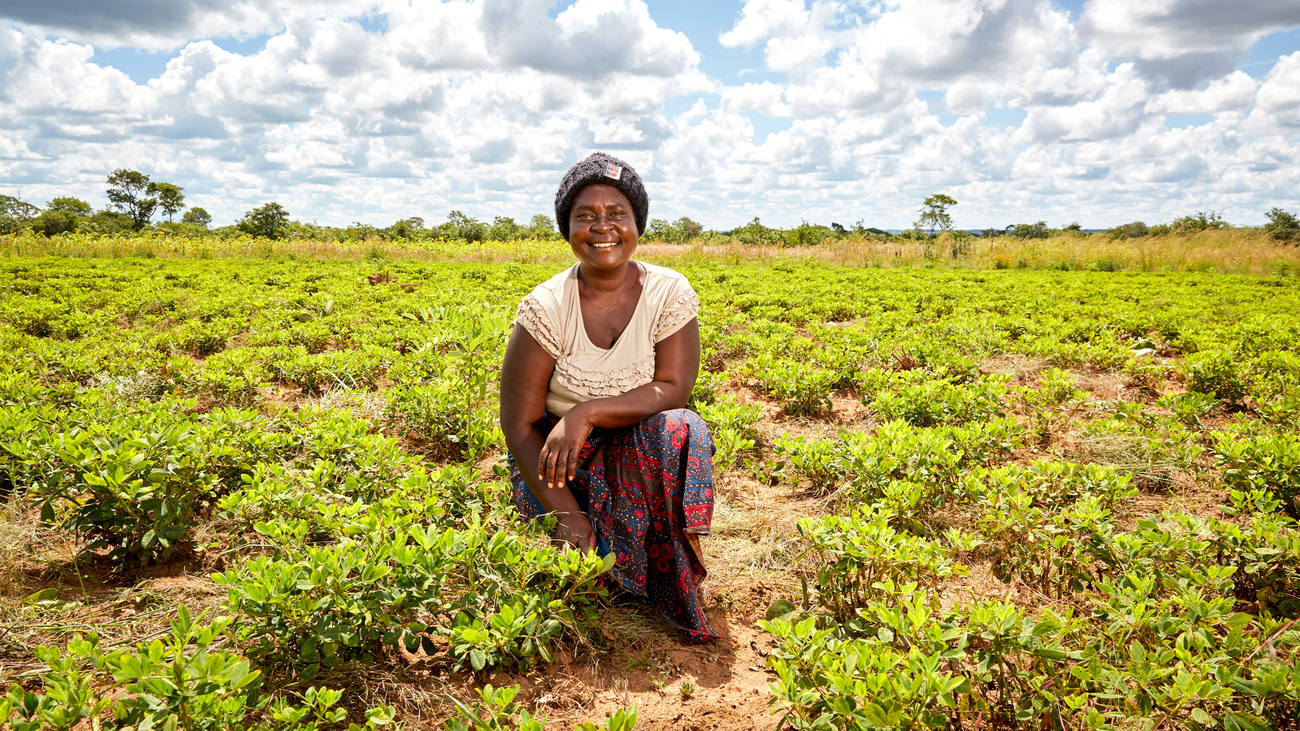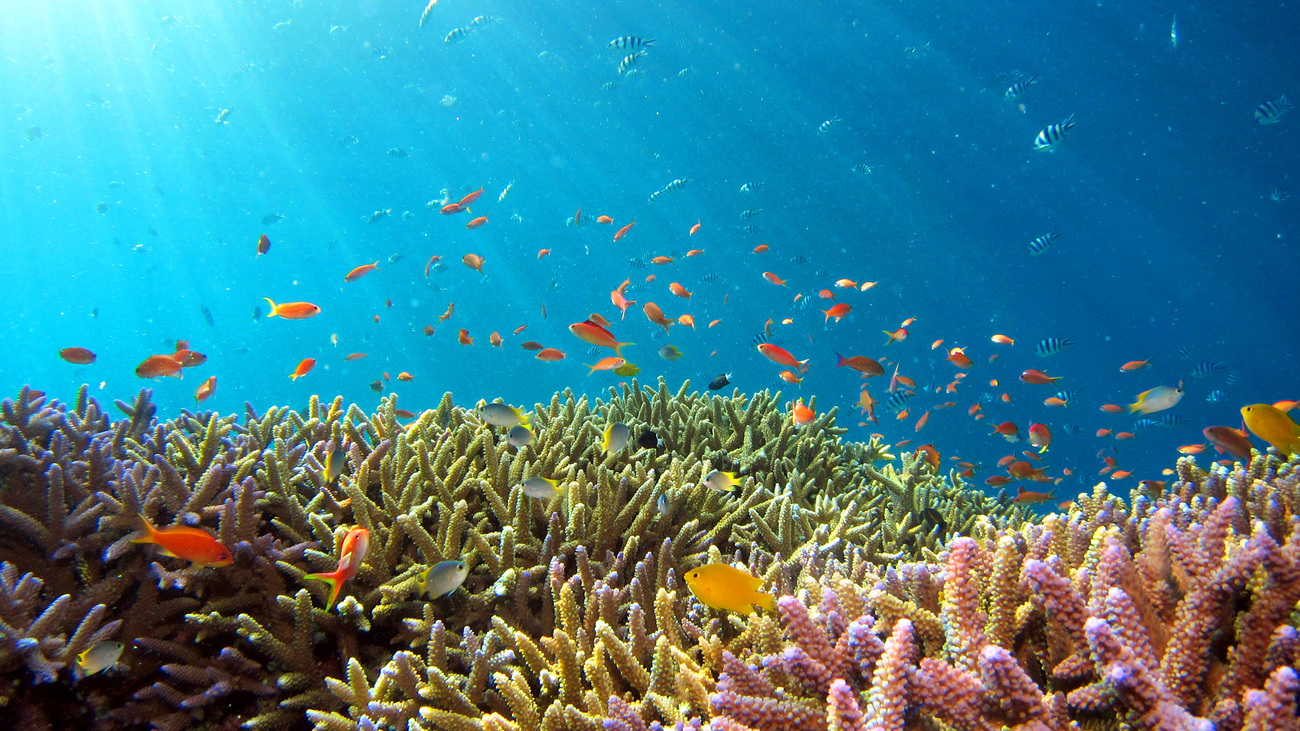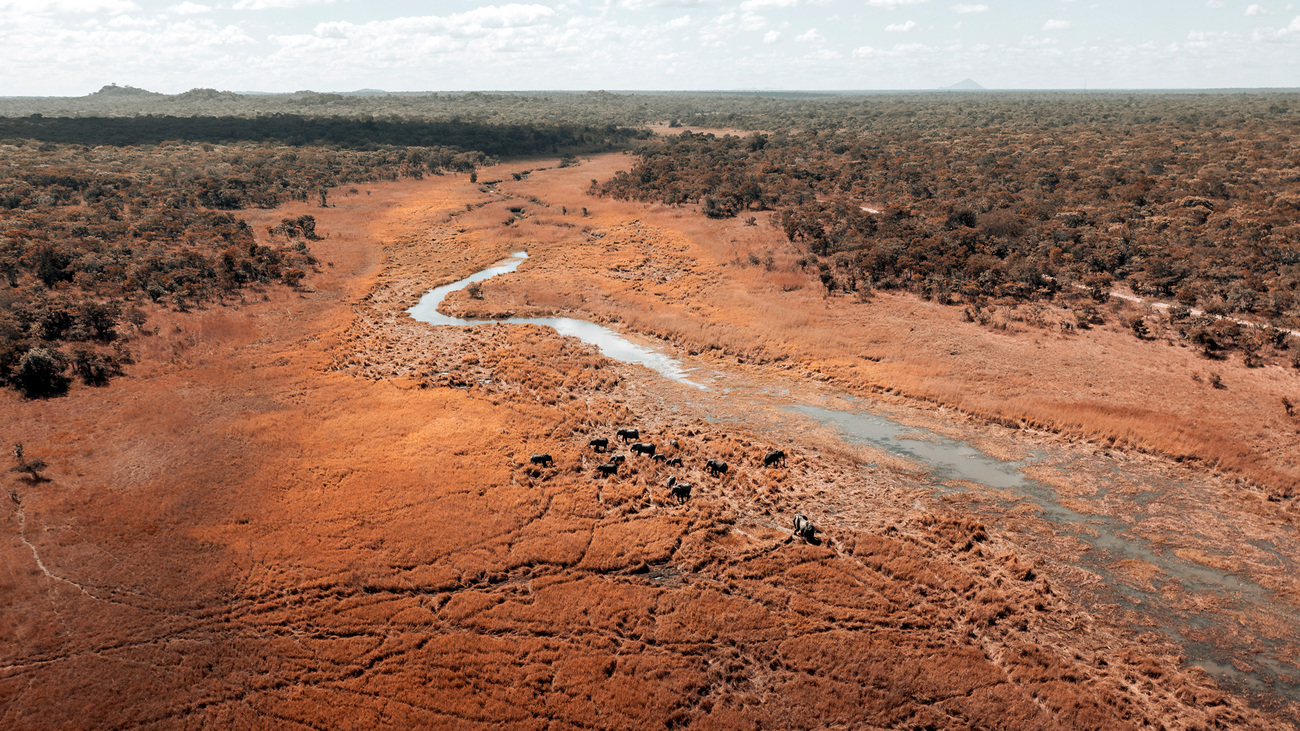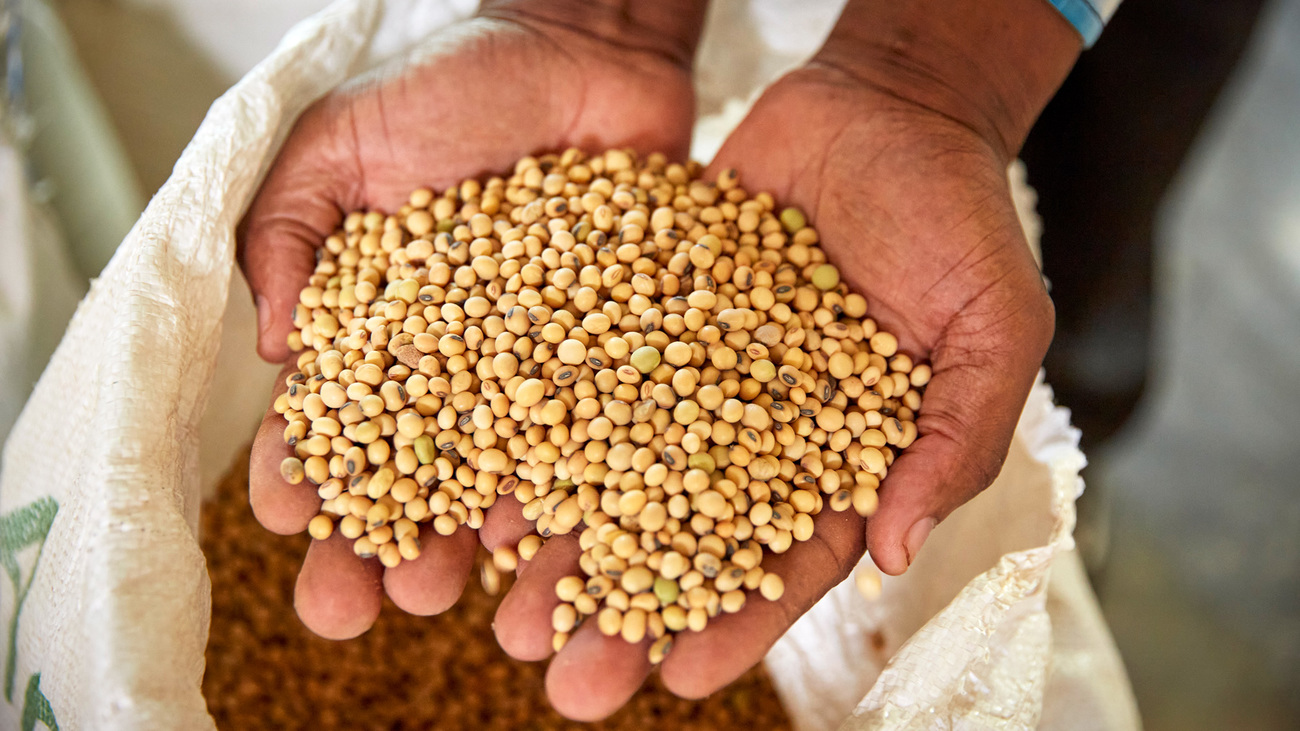Interconnected crises: climate change, biodiversity loss, poverty
Interconnected crises: climate change, biodiversity loss, poverty
By John Kogada and Phillip Kuvawoga
Climate change, biodiversity loss, and poverty are closely intertwined. Tackle one crisis, and we stand to improve all three. But unfortunately, the opposite is also true.

As one crisis grows in severity, the others grow with it. These crises amplify one another, creating a vicious cycle of habitat destruction, mass extinction, rising global temperatures, and the loss of homes and livelihoods.
Climate change
Climate change is the term used to describe long-term changes to the Earth’s temperatures and weather patterns. While some degree of climate change occurs naturally, due to changes in solar activity and large volcanic eruptions, most climate change that has occurred since the 1880s can be attributed to humans.
The burning of fossil fuels—like coal, oil, and gas—has created greenhouse gases, including carbon dioxide (CO2) and methane. These gases trap the sun’s heat and raise temperatures across the planet. The average temperature of the Earth’s surface is now around 1.2 degrees Celsius warmer than it was before the Industrial Revolution.
As part of the Paris Agreement, countries around the world are working to prevent global temperatures from rising more than 1.5 degrees Celsius above pre-industrial levels. This is because climate scientists agree that if the Earth gets much hotter, the impacts of climate change will become much more extreme—some changes would be irreversible.
Biodiversity loss
Biodiversity loss is a term used to describe the decline or disappearance of animal, plant, and organism species. It also refers to a reduction in genetic diversity within species and, on a global scale, the loss of entire ecosystems.
Like climate change, a certain amount of biodiversity loss is considered natural. The background extinction rate is roughly one to five species per year. But researchers estimate that the current rate of species loss is between 100 and 10,000 times the background extinction rate.
More species are currently at risk of extinction than ever before. Around 25% of assessed animal and plant species are threatened. This is due to climate change and human activity.
Key drivers of biodiversity loss include:
- habitat destruction, degradation, and fragmentation
- the introduction of invasive species
- pollution
- the overexploitation of natural resources (for example, overfishing)
Biodiversity loss can impact food sources, reproduction, genetic diversity, and the prevalence of disease. And it doesn’t just impact individual species. Biodiversity loss can lead to the breakdown of entire ecosystems. The loss of just one species can have a huge impact on this intricately balanced web of life.
For example, coral reefs become bleached by warm ocean temperatures. The marine species that rely on the coral for shelter and feeding grounds lose their habitat. As these species decline, the algae that they eat grows unchecked. The algae cover the coral’s surface, blocking the sunlight the coral needs to survive and further accelerating their decline.

Poverty
Poverty is a state in which a person lacks the resources required to meet their basic needs. People living in poverty may struggle to access food, clean water, shelter, education, healthcare, and other essentials.
People living in poverty are also more likely to experience social discrimination and exclusion than those who have their needs met. They struggle to make their voices and perspectives heard—and don’t tend to get a say in decisions that impact them and their communities.
The global poverty line is set at US$2.15 per day. This is determined to be the amount of money needed to afford essentials like food and shelter. In 2023, almost 700 million people around the world lived on less than $2.15 per day—10% of the global population.
Climate change disproportionately impacts poorer communities
The poorest communities in the world tend to be located in areas that are most at risk from climate change. This includes, for example:
- Africa’s Sahel region, which is prone to drought and desertification
- South and Southeast Asia, which are at serious risk from flash floods and landslides
- Pacific Island nations, which are threatened by rising sea levels and saltwater intrusion
Countries that emit the least greenhouse gases are often those most affected by climate change, whether it be heightened temperatures, shifting weather patterns, or increased risk of disasters. They are also the least financially equipped to deal with its repercussions, with fewer resources and weaker infrastructure.
This means that climate change poses a real and urgent threat to the livelihoods, food security, and health of people living in poverty. Without insurance or effective support, communities find it hard to recover if their home is destroyed or if a harvest fails. People are forced to sell their land or livestock at low prices, which pushes them further into poverty.
Climate change is exacerbating poverty among many communities. It’s estimated that by 2030, it could push more than 120 million more people below the poverty line.
Biodiversity loss disproportionately impacts those who rely on nature in their lives and livelihoods
Approximately 70% of the world’s poor rely on natural resources for their livelihoods, as they farm, fish, and forage to earn an income. These communities also live much closer to nature than most people in wealthier countries. So, like climate change, biodiversity loss disproportionately impacts people living in poverty.
Biodiversity loss strips these communities of essential resources, making it harder to access food, clean water, fuel, and medicine. Their livelihoods are also impacted. Soil quality is declining, making it harder to grow crops, and fish stocks are collapsing, which means they may struggle to bring in a financially viable catch.
As animal habitats and food sources are destroyed, some species move closer to human settlements. Here, they damage crops and property and prey on livestock, placing an additional strain on these communities and their financial resources. This can lead to dangerous swells of human-wildlife conflict.
Biodiversity loss also exposes people to greater risks from climate change. As healthy ecosystems protect against natural disasters like floods, droughts, and wildfires, biodiversity loss weakens these protections, exposing already vulnerable communities to the worst impacts of extreme weather events.
A vicious cycle
Climate change and biodiversity loss amplify each other. For instance, forests are rich in biodiversity and act as vital carbon sinks. Deforestation reduces biodiversity, increasing carbon emissions and accelerating climate change. This further stresses ecosystems and communities. Deforestation is responsible for roughly 18% of human-produced carbon dioxide emissions.
Peatlands are another massive carbon sink, home to a wide range of animals, planets, fungi, and microorganisms. When peatlands are burnt, drained, or converted for agriculture, this habitat is lost and carbon dioxide is released into the atmosphere.
Climate change is also causing sea levels to rise. It’s likely that sea levels will rise more than 50 centimetres (20 inches) by 2100. This is leading to biodiversity loss in coastal ecosystems. It’s also fuelling more climate change because coastal ecosystems are important carbon stores. Mangroves, for example, store three to five times as much carbon per acre as other tropical forests.
Rising global temperatures impact mating behaviours, food availability, and migration patterns in animal species that are forced to adapt or pushed to extinction. The process of adaptation can also increase biodiversity loss. As animal species are forced into new habitats, they can disrupt the food chain, putting strain on other species living in an area—and people.

Climate change is currently the second biggest cause of biodiversity loss in the ocean and the fourth biggest cause of biodiversity loss on land. It is also predicted that 20 to 30% of animal and plant species will be at greater risk of extinction if the rise in global temperatures exceeds two to three degrees Celsius.
Supporting communities by preserving biodiversity and combatting climate change
Protecting, managing, and restoring ecosystems—like forests, peatlands, mangroves, and coral reefs—helps to preserve biodiversity. It also supports communities that rely on these ecosystems for their livelihoods.
Nature-based solutions to climate change—like biodiversity conservation, reforestation, and ecological farming—should not be overlooked. These strategies can deliver at least one third of the carbon removal that is needed to keep global warming below the agreed 1.5 degrees Celsius, and they can also engage communities in sustainable livelihood opportunities, helping build resilience of not just of the landscape, but of people, too.
Conservation and climate solutions work best when led by those most impacted by these issues. IFAW champions locally-led adaptation—putting conservation decisions in the hands of the people who know the land and wildlife best. 80% of the planet’s biodiversity is held in lands and waters conserved by indigenous peoples and local communities. We support communities in sustainable livelihoods, innovative human-wildlife conflict solutions, and becoming stewards of nature.
We have been taking a climate-smart approach to conservation at the Kitenden Community Wildlife Conservancy in Kenya. Here, we’ve supported members of the Maasai community to transform a degraded area on the edge of Amboseli National Park into a wildlife haven. The wildlife area delivers socio-economic benefits to 2,600 households through employment, tourism, and lease fees.
In the Malawi–Zambia Transfrontier Conservation Area, we’ve been working with COMACO to help farmers learn and adopt sustainable, climate-friendly agriculture techniques—helping their livelihoods and healing the planet.

We support vocational training for women in Kenya, Malawi, and China, helping them diversify their sources of income to include climate-resilient income streams.
Another of our projects in China has built community resilience toward human-elephant conflict while supporting sustainable, alternative livelihoods.
These types of projects tackle the crises of climate change, biodiversity loss, and poverty together. Because these issues are always interconnected, we believe this is the most effective way to bring about long-lasting change for people, wildlife, and the planet.
Related content
Every problem has a solution, every solution needs support.
The problems we face are urgent, complicated, and resistant to change. Real solutions demand creativity, hard work, and involvement from people like you.